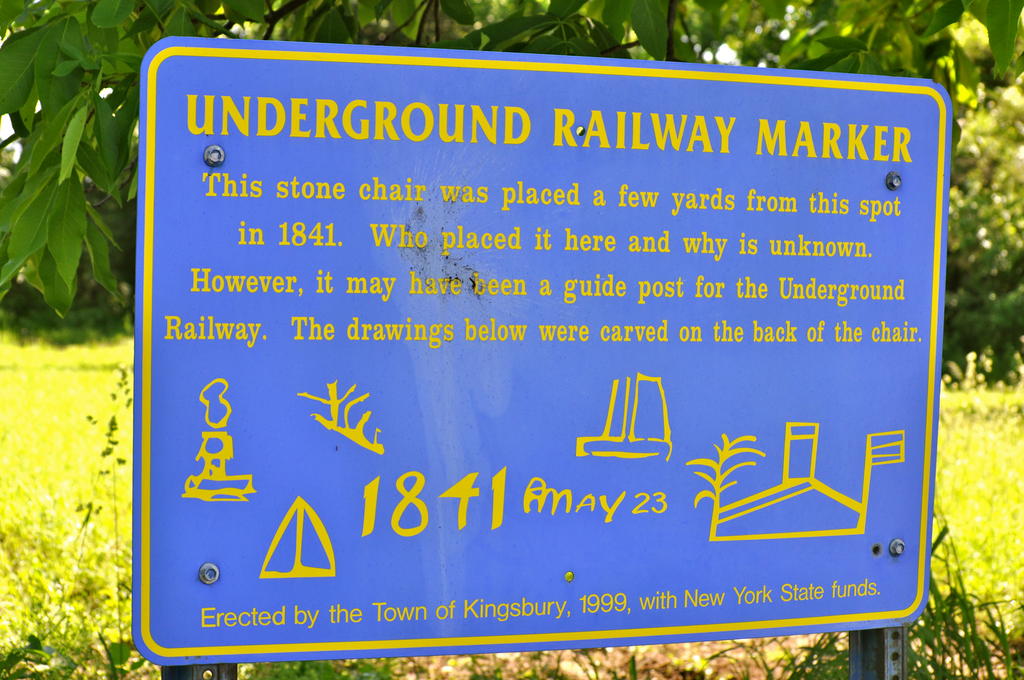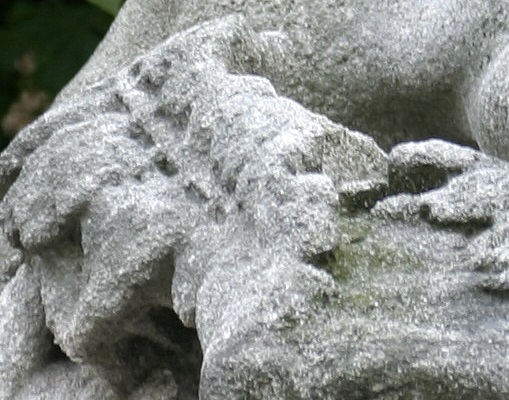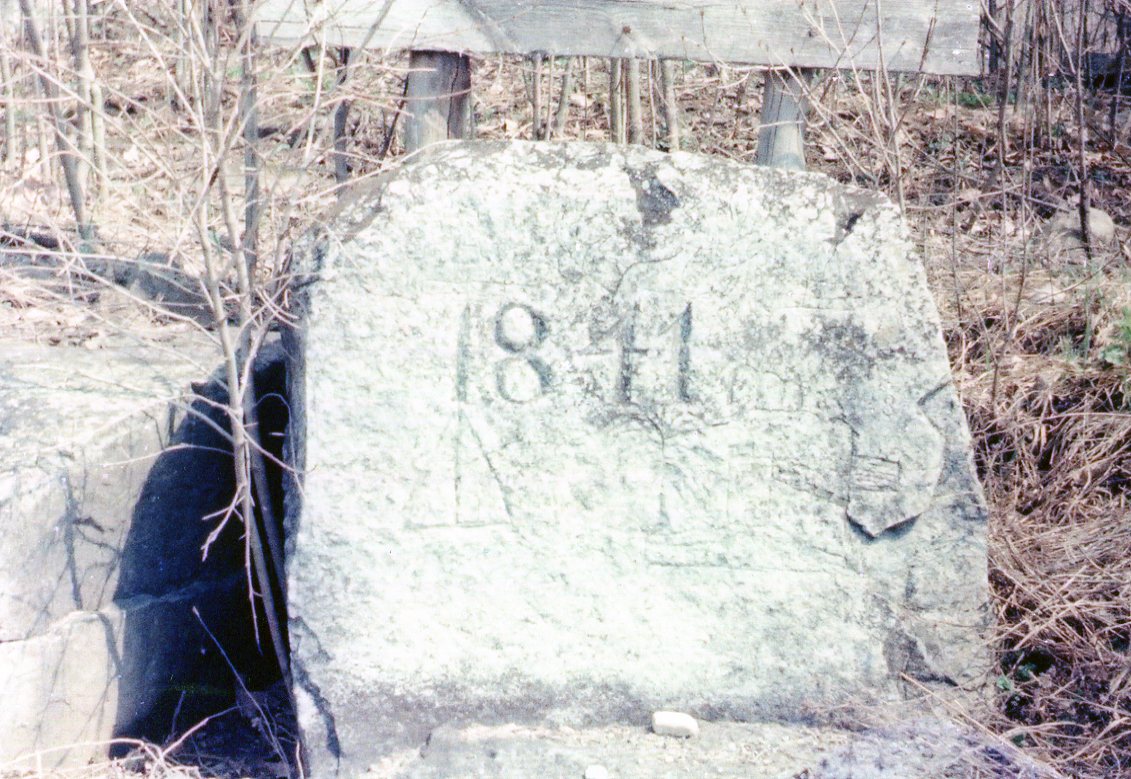Kingsbury History
While we lived here we learned bits and pieces of local history.
On one of the roads near us was what would become known as the Stone Chair. I'm going to put some articles here that I found in my travels both in life and later or more recently on the internet.
Just the basics here first. The stone chair is a big rock on the edge of one of the roads with carvings on it. Historians think it might possibly have been a message for runaway slaves to find their way to Canada and freedom. There were also thought to be a lot of tunnels running beneath the houses in our area, at least the old houses. Old timers said slaves were hidden in them. Later we would learn that Argyle had a similar history of hiding slaves but there were also stories of a place where slaves were tortured in Argyle. I have never seen proof of this but some old folks now passed on would sometimes talk about it all as if it were true.

That is a grainy photo from a news story.

Somewhere I have photos I took of it and a new sign the historical society put up there. It was a miracle the stone was left there when they redid the road and it wasn't damaged.
1800's Abolitionism in Northern New York
Tom Calarco
Perhaps even more intriguing than the Vaughn Corners sign
we talked about last column is the granite chair chiseled like a headstone and
found on Vaughn road in Kingsbury about seventh-tenths of a mile to the south.
It's less well known but far more likely to be an actual artifact of the
Underground Railroad that in the early 1800's helped slaves escape to freedom in
Canada.
The Post-Star story said that Mr. Wright first took note
of the stone in 1900, and it stated his theory that it might have a link to the
Underground Railroad and to George Brown, minister and stone mason.
LaMere's & Lodings theory
Kingsbury Town historian Paul Loding says his uncle,
George LaMere, was the first person to realize the relevance of the stone chair.
Loding possesses a sketch made by LaMere and photos he took in the 1930s.
Loding expounds a fascinating theory about the meaning of
these markings, and it is proving more credible as we turn up new information.
He suggests that the landmarks referred to actual
locations juxtaposed to form a map. By his reckoning, the fort represents the
village of Fort Ann and some Underground Railroad station(s), perhaps the nearby
Goodman farm, one long reputed haven.
Of the other markings, Loding speculates that the
mountain indicates a small range, among which is Putnam Mountain; the smokestack
referred to the Mount Hope Blast Furnace which sat just north of the mountain;
and the sailboat in the top right corner above the fort represented boats
waiting in South Bay, the inlet to Lake Champlain.
What evidence do we have to support this theory?
Canal & Champlain: Freedom Route
We've alluded to the use by fleeing slaves of the nearby
Champlain Canal, a crucial link to Lake Champlain, then on to Canada.
A letter written in 1844 by abolitionist Abel Brown, a
leading agent of the Eastern New York Anti-slavery Society, reported that in
1842 it had aided more than 350 fugitive slaves. The steamship Burlington was a
vessel that plied the waters of Lake Champlain, connecting Washington County
with Canada.
"Many a slave has enjoyed the indescribable pleasure of
leaping from the liberty-loving [ship] Burlington to feel the pleasure of being
free under the protection of a Queen whose pleasure it is to make the lowest of
her subjects happy." Abel Brown was quoted in a memoir posthumously published by
his wife.
African-American Rev. Brown
But who would have created the landmark stone chair?
Loding attributes it to an African-American stone mason, Rev. George S. Brown,
who came to this area in 1827, the year slavery was outlawed in New York. He
became well known here.
The story goes that Brown arrived as a wandering minstrel
outfitted with bagpipes, oboe, clarinet and other instruments. Religion was not
a part of his life.
But he stopped to take work at a farm in Kingsbury and
ended up staying, for the first two years with the Samuel Cole family. He
converted to Christianity and began appearing at evangelical meetings.
"Crowds came to hear him that no building was large
enough to hold them and ... many hundreds were soundly converted," said a
Post-star story by Florence Mcllvaine, citing a Sanford Ridge Church history by
Mr. and Mrs. George A. Webster.
Brown's stonework still visible
Rev. Brown also made a reputation as a skilled mason. His
work survives on several farms in the town of Kingsbury. The beautiful stone
structure, known popularly as the Mead House, at the corner of Geer Road and
Hicks Road was his largest project.
In the book Circuit Rider to Episcopacy, author William
LaRowe writes that this house contained "a room in the earth alongside the
cellar wall completely hidden from view," and he speculated that it may have
been used to aid fugitive slaves.
LaRowe refers to another Methodist minister in the
region, Rev. Andrew Witherspoon, a noted anti-slavery speaker, who may have
influenced Brown's participation. In later years, Brown was a missionary in
Liberia and a preacher at the Sanford Ridge Methodist Church.
No matter who was the stone chair's creator,
circumstantial evidence of its authenticity is strong. Loding said he's received
a grant to place a historical
marker at the site of the chair.
We need not only to preserve the stone chair, but also
look in earnest for more relics and evidence of the Underground Railroad in our
region.

Just a personal note here. Mom hated Paul Loding. I don't know why. She may have said at one time but it's lost in time now.
These are some of the photos we took just before I left. They were making the road wider and they dug this up somewhat and moved it farther back from the edge of the road. As you can see, time and weather have done a number on it. When we were kids it was real easy to see what was etched on it. I'm not sure what the stone is made of, if its limestone or something harder. Limestone is notorious for eroding.
In New York State they have a problem with acid rain. Acid rain also does a lot of damage. It doesn't pour down like real rain. Its a mist so fine you can't see it or even feel it. I remember driving to work and having to stop at times to wipe the tears streaming from my eyes because they actually burned. It doesn't affect everyone that way but it did me.
"Acid rain describes any form of precipitation with high levels of nitric and sulfuric acids. It can also occur in the form of snow, fog, and tiny bits of dry material that settle to Earth." NG

That photo shows you what happens to a stone monument when its damaged by acid rain.


Two shots I took of the stone before the highway crew moved it and before the historical society took over.